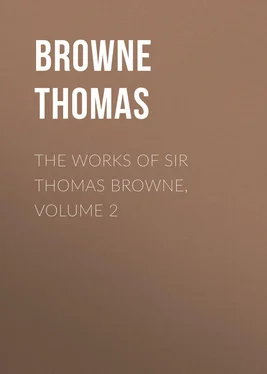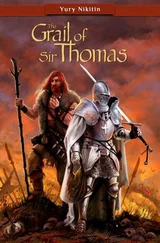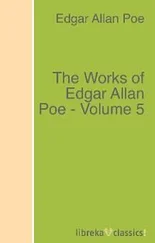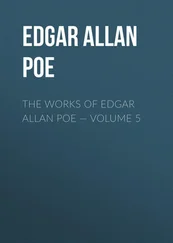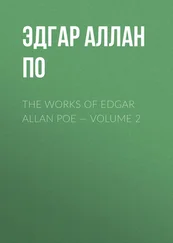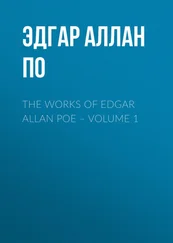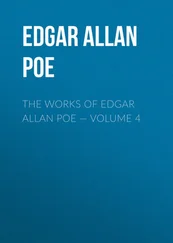Thomas Browne - The Works of Sir Thomas Browne, Volume 2
Здесь есть возможность читать онлайн «Thomas Browne - The Works of Sir Thomas Browne, Volume 2» — ознакомительный отрывок электронной книги совершенно бесплатно, а после прочтения отрывка купить полную версию. В некоторых случаях можно слушать аудио, скачать через торрент в формате fb2 и присутствует краткое содержание. ISBN: , Жанр: foreign_antique, foreign_prose, на английском языке. Описание произведения, (предисловие) а так же отзывы посетителей доступны на портале библиотеки ЛибКат.
- Название:The Works of Sir Thomas Browne, Volume 2
- Автор:
- Жанр:
- Год:неизвестен
- ISBN:http://www.gutenberg.org/ebooks/39961
- Рейтинг книги:5 / 5. Голосов: 1
-
Избранное:Добавить в избранное
- Отзывы:
-
Ваша оценка:
- 100
- 1
- 2
- 3
- 4
- 5
The Works of Sir Thomas Browne, Volume 2: краткое содержание, описание и аннотация
Предлагаем к чтению аннотацию, описание, краткое содержание или предисловие (зависит от того, что написал сам автор книги «The Works of Sir Thomas Browne, Volume 2»). Если вы не нашли необходимую информацию о книге — напишите в комментариях, мы постараемся отыскать её.
The Works of Sir Thomas Browne, Volume 2 — читать онлайн ознакомительный отрывок
Ниже представлен текст книги, разбитый по страницам. Система сохранения места последней прочитанной страницы, позволяет с удобством читать онлайн бесплатно книгу «The Works of Sir Thomas Browne, Volume 2», без необходимости каждый раз заново искать на чём Вы остановились. Поставьте закладку, и сможете в любой момент перейти на страницу, на которой закончили чтение.
Интервал:
Закладка:
Secondly, Although we concede there may be many Unicorns , yet are we still to seek; for whereunto to affix this Horn in question, or to determine from which thereof we receive this magnified Medicine, we have no assurance, or any satisfactory decision. For although we single out one, and eminently thereto assign the name of the Unicorn ; yet can we not be secure what creature is meant thereby; what constant shape it holdeth, or in what number to be received. For as far as our endeavours discover, this animal is not uniformly described, but differently set forth by those that undertake it. The Unicorn, how variously reported by Authors. Pliny affirmeth it is a fierce and terrible creature; Vartomannus a tame and mansuete Animal: those which Garcias ab Horto described about the cape of good hope, were beheld with heads like horses; those which Vartomannus beheld, he described with the head of a Deer; Pliny , Ælian , Solinus , and after these from ocular assurance, Paulus Venetus affirmeth, the feet of the Unicorn are undivided, and like the Elephants: But those two which Vartomannus beheld at Mecha , were as he describeth, footed like a Goat. As Ælian describeth, it is in the bigness of an Horse, as Vartomannus , of a Colt; that which Thevet speaketh of was not so big as an Heifer; but Paulus Venetus affirmeth, they are but little less then Elephants. Which are discriminations very material, and plainly declare, that under the same name Authors describe not the same Animal: so that the Unicorns Horn of one, is not that of another, although we proclaim an equal vertue in all.
Thirdly, Although we were agreed what Animal this was, or differed not in its description, yet would this also afford but little satisfaction; for the Horn we commonly extol, is not the same with that of the Ancients. For that in the description of Ælian and Pliny was black: this which is shewed amongst us is commonly white, none black; and of those five which Scaliger beheld, though one spadiceous, or of a light red, and two enclining to red, yet was there not any of this complexion among them.
Fourthly, What Horns soever they be which pass amongst us, they are not surely the Horns of any one kind of Animal, but must proceed from several sorts of Unicorns . For some are wreathed, some not: That famous one which is preserved at St. Dennis near Paris , hath wreathy spires, and chocleary turnings about it, which agreeth with the description of the Unicorns Horn in Ælian . Those two in the treasure of St. Mark are plain, and best accord with those of the Indian Ass, or the descriptions of other Unicorns : That in the Repository of the electour of Saxone is plain and not hollow, and is believed to be a true Land Unicorns Horn. Albertus Magnus describeth one ten foot long, and at the base about thirteen inches compass: And that of Antwerp which Goropius Becanus describeth, is not much inferiour unto it; which best agree unto the descriptions of the Sea-Unicorns ; for these, as Olaus affirmeth, are of that strength and bigness, as able to penetrate the ribs of ships. The same is more probable, because it was brought from Island, from whence, as Becanus affirmeth, three other were brought in his days: And we have heard of some which have been found by the Sea-side, and brought unto us from America . So that while we commend the Unicorns Horn, and conceive it peculiar but unto one animal; under apprehension of the same vertue, we use very many; and commend that effect from all, which every one confineth unto some one he hath either seen or described.
Fifthly, Although there be many Unicorns , and consequently many Horns, yet many there are which bear that name, and currantly pass among us, which are no Horns at all. Such are those fragments and pieces of Lapis Ceratites , commonly termed Cornu fossile , whereof Bœtius had no less than twenty several sorts presented him for Unicorns Horn. Hereof in subterraneous cavities, and under the earth there are many to be found in several parts of Germany ; which are but the lapidescencies and petrifactive mutations of hard bodies; sometimes of Horn, of teeth, of bones, and branches of trees, whereof there are some so imperfectly converted, as to retain the odor and qualities of their originals; as he relateth of pieces of Ash and Walnut. Again, in most, if not all which pass amongst us, and are extolled for precious Horns, we discover not an affection common unto other Horns; that is, they mollifie not with fire, they soften not upon decoction or infusion, nor will they afford a jelly, or mucilaginous concretion in either; which notwithstanding we may effect in Goats horns, Sheeps, Cows and Harts-horn, in the Horn of the Rhinoceros , the horn of the Pristis or Sword fish. Nor do they become friable or easily powderable by Philosophical calcination, that is, from the vapor or steam of water, but split and rift contrary to others horns. Unicorns Horn commonly used in England, what it is . Briefly, many of those commonly received, and whereof there be so many fragments preserved in England , are not only no Horn, but a substance harder then a bone, that is, parts of the tooth of a Morse or Sea-horse; in the midst of the solider part contained a curdled grain, which is not to be found in Ivory. This in Northern Regions is of frequent use for hafts of knives or hilts of swords, and being burnt becomes a good remedy for fluxes: but Antidotally used, and exposed for Unicorns Horn, it is an insufferable delusion; and with more veniable deceit, it might have been practised in Harts-horn.
The like deceit may be practised in the teeth of other Sea-animals; in the teeth also of the Hippopotamus , or great Animal which frequenteth the River Nilus : For we read that the same was anciently used instead of Ivory or Elephants tooth. Nor is it to be omitted, what hath been formerly suspected, but now confirmed by Olaus Wormius , and Thomas Bartholinus and others, that those long Horns preserved as pretious rarities in many places, are but the teeth of Narhwales, to be found about Island, Greenland and other Northern regions; of many feet long, commonly wreathed, very deeply fastned in the upper jaw, and standing directly forward, graphically described in Bartholinus De Unicornu., according unto one sent from a Bishop of Island, not separated from the crany. Hereof Mercator hath taken notice in his description of Island: some relations hereof there seem to be in Purchas , who also delivereth that the Horn at Windsor , was in his second voyage brought hither by Frobisher . These before the Northern discoveries, as unknown rarities, were carried by Merchants into all parts of Europe ; and though found on the Sea-shore, were sold at very high rates; but are now become more common, and probably in time will prove of little esteem; and the bargain of Julius the third, be accounted a very hard one, who stuck not to give many thousand crowns for one.
Nor is it great wonder we may be so deceived in this, being daily gulled in the brother Antidote Bezoar; whereof though many be false, yet one there passeth amongst us of more intollerable delusion; somewhat paler then the true stone, and given by women in the extremity of great diseases, which notwithstanding is no stone, but seems to be the stony seed of some Lithospermum or greater Grumwell; or the Lobus Echinatus of Clusius , called also the Bezoar Nut; for being broken, it discovereth a kernel of a leguminous smell and tast, bitter like a Lupine, and will swell and sprout if set in the ground, and therefore more serviceable for issues, then dangerous and virulent diseases.
Читать дальшеИнтервал:
Закладка:
Похожие книги на «The Works of Sir Thomas Browne, Volume 2»
Представляем Вашему вниманию похожие книги на «The Works of Sir Thomas Browne, Volume 2» списком для выбора. Мы отобрали схожую по названию и смыслу литературу в надежде предоставить читателям больше вариантов отыскать новые, интересные, ещё непрочитанные произведения.
Обсуждение, отзывы о книге «The Works of Sir Thomas Browne, Volume 2» и просто собственные мнения читателей. Оставьте ваши комментарии, напишите, что Вы думаете о произведении, его смысле или главных героях. Укажите что конкретно понравилось, а что нет, и почему Вы так считаете.
